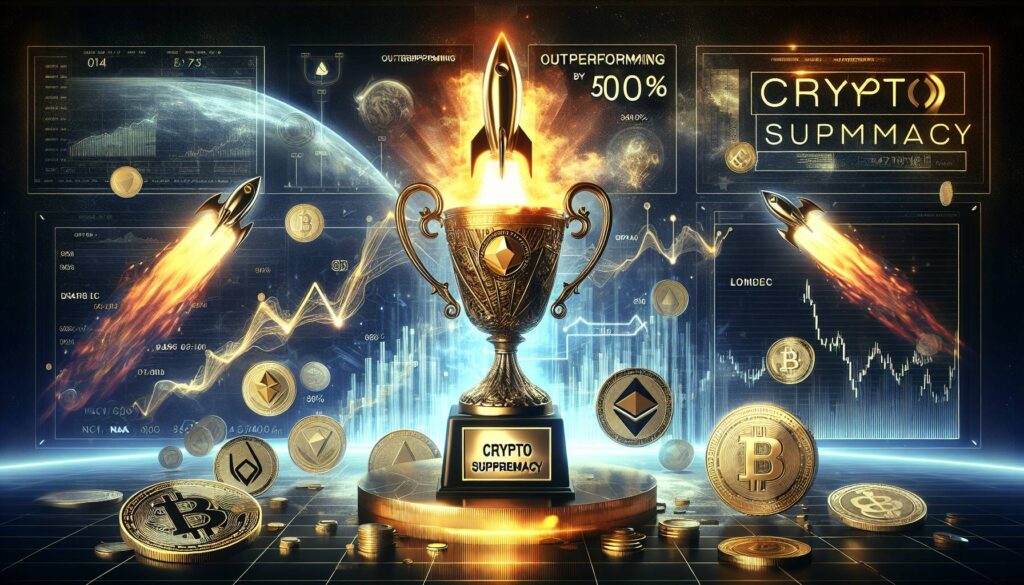In the dynamic world of cryptocurrency, Solana is currently at a crossroads as its leadership engages in discussions about a potential economic overhaul that could reshape its monetary policy. Central to this debate is the network’s approach to inflation, a crucial aspect for validating and securing transactions on its platform. Currently, Solana operates on a model that produces new tokens to reward validators—a necessary practice in proof of stake systems. However, many insiders believe the current inflation rate of 4.7% is too high and could be stifling long-term investment appeal.
The proposal making waves is SIMD-0228, crafted in part by Tushar Jain from Multicoin Capital, which aims to drastically reduce inflation to around 1.5%. This shift would limit the influx of new SOL tokens into the market, theoretically stabilizing prices by reducing the amount that validators could earn and sell. Jain argues that lowering inflation could enhance Solana’s attractiveness to institutional investors, aligning it more closely with traditional finance priorities.
The discussions have sparked intense debate among validators, especially smaller operators who fear that such changes could threaten their viability within the network. Critics of the proposal warn that it could inadvertently centralize power by pushing out smaller validators who contribute to the ecosystem’s decentralization.
While proponents advocate for the economic reforms, they acknowledge that the execution of SIMD-0228 could force hundreds of smaller validators out of business. The scenario raises concerns about the network’s long-term health and sustainability, as fewer validators could mean diminished security and resilience amid the broader cryptocurrency landscape.
With different perspectives on the potential fallout, the community faces a pivotal moment. The debate is not merely about numbers; it encapsulates larger themes of decentralization, validator equity, and the balance between growth and sustainability. As these discussions unfold, Solana’s future trajectory remains uncertain yet intriguingly complex, positioning it as a focal point in the ongoing evolution of blockchain technology.

Solana’s Economic Overhaul Debate: Implications and Concerns
Key discussions about Solana’s economic model are underway, focusing on the potential impacts for both large and small validators within the network.
- Proposed Inflation Reduction
- The SIMD-0228 proposal aims to reduce inflation from 4.7% to around 1.5%.
- This change could limit the issuance of new SOL tokens, affecting market dynamics.
- Impact on Small Validators
- Critics argue that the proposal may endanger 100 or more of Solana’s 1300 validators, pushing small operators out of business.
- Loss of smaller validators could lead to perceptions of increased centralization within the network.
- Stakeholder Perspectives
- Supporters, including key Solana figures, believe SIMD-0228 is essential for the network’s growth and Wall Street appeal.
- Opponents warn of the potential for significant validator losses, stressing small validators’ vital role in decentralization.
- Dynamic Rewards System
- SIMD-0228 proposes a “smarter curve” for staking rewards, adjusting based on the total amount of SOL staked in the network.
- This could enhance Solana’s security and usability by attracting more stakers during low participation periods.
- Potential Market Effects
- Reduced inflation and a smaller influx of new tokens could potentially benefit SOL’s price stability.
- Long-term ramifications for small validators might lead to shifts in how rewards and network participation are valued.
- The Call for Caution
- Some stakeholders argue for a careful approach to avoid precipitating negative outcomes that could destabilize the network.
- The rush for changes in the economic model may lead to unintended consequences for community engagement and decentralization.
“Why do we do it this way? Because we’ve always done it this way. And I think that is the death knell of the organization.” – Tushar Jain
Solana’s Economic Overhaul: A Double-Edged Sword
Solana is in the throes of discussing a potential economic overhaul that could dramatically alter its investment landscape. While the proposed changes aim to reduce inflation and attract institutional interest, they might also endanger the very fabric of decentralization the network prides itself on. The crux of this debate lies in Solana’s monetary policy: should they continue to print new tokens to incentivize validators, or should they adopt a more conservative, market-driven approach?
One of the major advantages of the SIMD-0228 proposal is its potential to enhance SOL’s investment appeal. By slashing inflation rates from 4.7% down to approximately 1.5%, supporters argue that this could create a more stable investment environment, making SOL more attractive to larger institutional investors. A decrease in the influx of new tokens could stabilize prices, appealing to stakers who might prefer earning returns without the dilution of their holdings. Tushar Jain, a key proponent, emphasizes that this shift could pave the way for new products like a Solana ETF, potentially unlocking billions in investment.
However, the proposal faces significant pushback due to its potential impact on small and mid-sized validators. Critics highlight that the new inflation regime may drive up to 250 smaller validators out of business, exacerbating the risks of centralization. Validators who are already operating on narrow profit margins may find it increasingly difficult to remain viable, which could have dire consequences for the community aspect of Solana’s network. David Girder’s analysis points out that if a significant number of validators exit, the network could be left vulnerable to centralization, undermining the foundational principles of decentralization, which play a critical role in the security and trustworthiness of the blockchain.
This situation could create benefits for large institutional players who are vying for a more structured environment and see the potential for higher returns. At the same time, it poses problems for the smaller validators who play a crucial role in maintaining network integrity and decentralization. If these smaller players are forced out, it might not only diminish the diversity of validators but also raise questions about Solana’s long-term sustainability and reliability as an alternative to more established networks like Ethereum.
Ultimately, this economic restructuring debate opens the floor for broader discussions on the nature of blockchain governance and scalability. As Solana’s decision-makers navigate through these tumultuous waters, they will need to carefully balance the demands of institutional investors against the health of the community that has supported them. The decisions made during this pivotal moment may define Solana’s trajectory, potentially influencing how other blockchain projects approach similar dilemmas in the future.
















